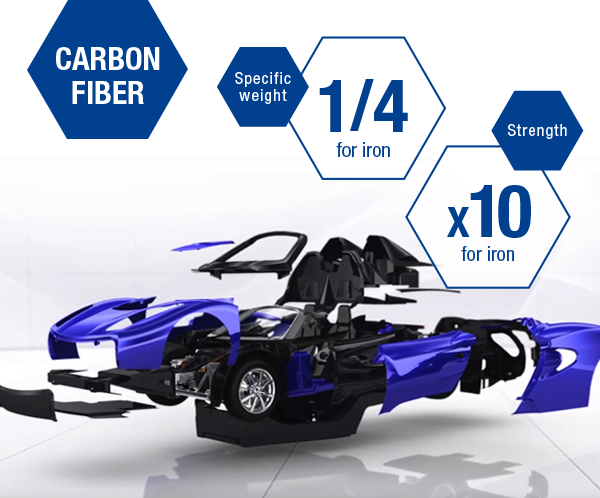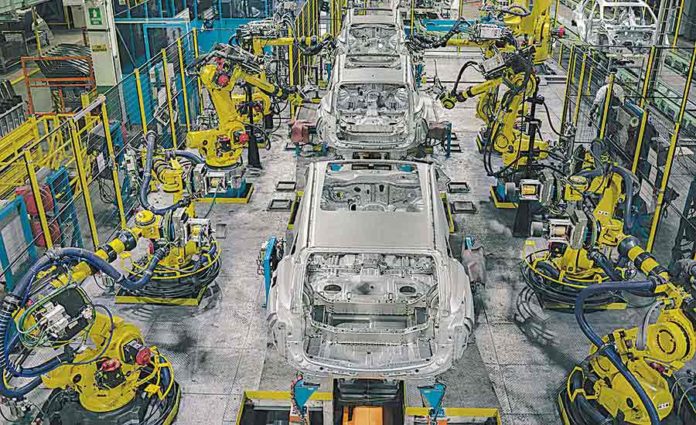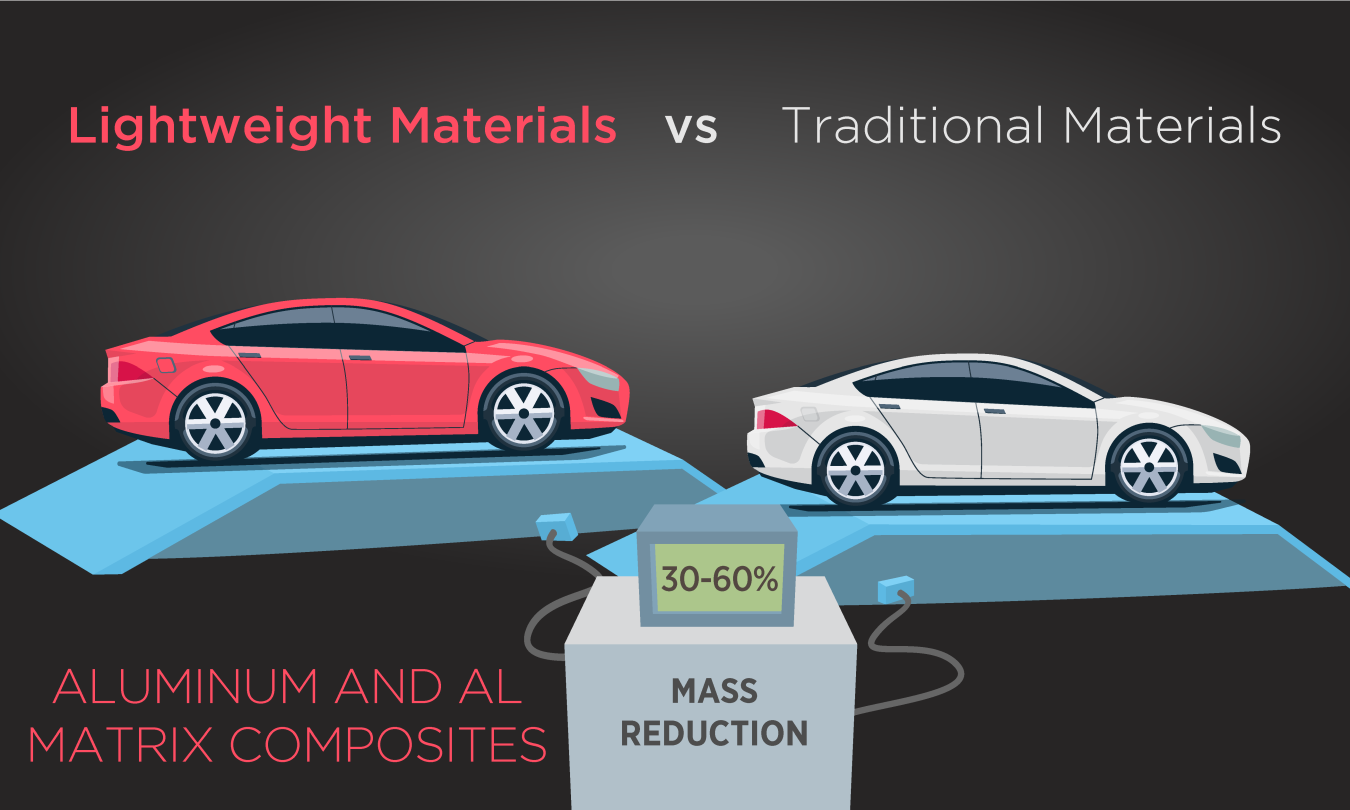Lightweight as a benefit of co-design. The results of this change in thinking can be dramatic.

Automotive Lightweighting Radical Gains Through Smart Design
Automotive manufacturers and their supplier networks are accelerating the transition to a new.

. Achieving a balance between weight reduction manufacturing costs and factor of safety of the design. In the fulfilments of these requirements the weight reduction has an important role. Concerning the overall weight of an automobile the car body has a decisive role.
The use of aluminum can potentially reduce the weight of the vehicle body. This third edition report looks at policy initiatives weight saving methods competition between OEMs barriers drivers and government regulation. These materials demand appropriate cutting processes.
Use of light weight materials Removing contentfeatures. Another area of research is the 52 diet. Up to 10 cash back Weight reduction in automotive industry can be achieved by the use of advanced high-strength steels AHSS.
Suspension and engine mountings are made from aluminium either extrusions or castings. Reducing Automotive Interior Weight With a High-End and Tech Interior. It is an easier version of the alternate-day fasting ADF.
Additional factors to consider before embarking on lightweighting design. Using lightweight materials such as aluminum and carbon-fiber or optimizing existing vehicle designs are some of the key strategies adopted by manufacturers in the automotive industry. Fuel economy CO2 emissions are detailed for the US EU Japan South Korea China.
Automakers began to reinvent themselves as digital companies a few years. Number of parts reduced from 10 to 1. 45 weight reduction of the additively manufactured part while keeping the same robustness.
Magnesium parts are 33 lighter than aluminium and a whopping 75 lighter than steel. Car Weight Reduction. A carbon-fiber-reinforced plastic CFRP was used for the reinforcement part of the B-pillar assembly to substitute the conventional steel materials for reducing the weight of vehicle.
Lightweighting or reducing the weight of a car is essential for staying competitive in an evolving market. In this post we are going to discuss how it is possible to reduce components weight while maintaining their functionality through the use of co-design. Magnesium parts are 33-percent lighter than aluminum and a whopping 75-percent lighter than steel.
Support ribs and honeycombed sections reduce part weight while retaining structural integrity especially with injection-molded thermoplastic parts. Challenging Applications in High Value Lightweighting. The strategic targets were a 40 and a 45 mass reduction relative to a standard North American midsize passenger sedan at an effective cost of 342 per pound lb saved.
Weight Reduction in Automotive Design and Manufacture Weight reduction is again a priority across the industry as strict new regulations push for greater vehicle efficiencyCO2 reduction in the. The baseline vehicle was an average of several available vehicles in this class. Through a collaborative relationship automotive engineering and consulting company Ricardo and Albany Engineered Composites AEC are introducing lightweight composite body chassis and other structural components into the automotive industry.
The obese individuals reduced their weight and body fat as well as their risk for heart disease. In the production of car body elements often termed as body-in-white production sheet metal forming is regarded as one of the most important manufacturing processes. Recent developments have shown that up to 50 weight saving for the body in white can be achieved by the substitution of steel by aluminum.
Vehicle safety cost implications are also considered along with weight reduction by sector body structure. The word lightweight is on every auto manufacturers lips lately and for good reason. For the most part mainstream automakers will employ traditional metalworking approaches to weight reduction according to HIS as these offer a cost-effective application of known competencies secure supply chains and most.
This involves eating normally five days a week and consuming 500 calories two days a week if you are a woman or 600 calories if you are a man. Up to 10 cash back A composite B-pillar was designed and manufactured by design optimization combined with an impact analysis. Significant weight reduction possibilities exist even compared to a modern vehicle body designed using advanced high strength steel grades.
Dick Slansky Senior Analyst ARC Advisory Group. Most of the main exterior panels are made from aluminium with. 25 savings in production costs by reducing material usage and assembly times.
The relationship enables customers to take advantage of Ricardos. By Caterina Tosca September 29 2017. Magnesium is another light metal that is becoming increasingly common in automotive engineering.
The use of carbon fiber and polymer matrix composites are believed to enable car body-weight reductions of 25 percent to 70 percent. Press-hardened parts with their extreme high. Components weight plays an important role in every product production just think of the possible saving in terms of.
The automotive industry is meeting the challenge to design and manufacture the next generation of EVs by embracing emerging technologies to make radical changes to its manufacturing processes. While weight reduction in automotive design and manufacturing has been on-going for several years in the area of powertrain technology lightweighting has been a difficult challenge to overcome due to functional requirements as well as material and manufacturing constraintsThe Multi Material Light. Weight reduction of more than 4.
IHS Automotive SupplierBusiness Weight Reduction in Automotive Design and this is despite having added a wide range of safety and convenience features on the new model adding weight. EcoCAR 3 is a university based competition with the goal of hybridizing a 2016 Chevrolet Camaro to increase fuel economy decrease environmental impact and maintain user acceptability. April 19 2022.
INTRODUCTION REVIEW OF RELATED WORK Additive manufacturing enables the production of complex. Lightweighting and electrificationthe two major objectives for modern-day vehicle designare rapidly advancing through more liberal use of 3D printing technologies buoyed by adoption of design for additive manufacturing DfAM principles. Full vehicle structures is to achieve a significant weight reduction compared to a conventional design.
Depending on the specific application the weight reduction potential ranges between 25 and over 50. Alternative design and production strategies for a series of lightweight vehicle concepts. A variety of weight reduction strategies are adopted by different automakers to minimize weight in automobiles.
Weight Reduction through the Design and Manufacturing of Composite Half-Shafts for the EcoCAR 3. Adiabatic blanking is a suitable process to process AHSS parts with excellent cutting surface quality that does not require reworking. Additional factors to consider before embarking on lightweighting design.
Support ribs and honeycombed sections reduce part weight while retaining structural integrity especially with injection-moulded thermoplastic parts.

Weight Reduction Solutions Automotive Solutions Toray

Lightweighting Is Top Priority For Automotive Industry 2018 06 07 Assembly Magazine Assembly

Lightweighting Is Top Priority For Automotive Industry 2018 06 07 Assembly Magazine Assembly
Design Hmi Additive Manufacturing Sustainability

Timeline A Path To Lightweight Materials In Cars And Trucks Department Of Energy

Automotive Lightweighting Radical Gains Through Smart Design

Automotive Lightweighting Radical Gains Through Smart Design

0 comments
Post a Comment